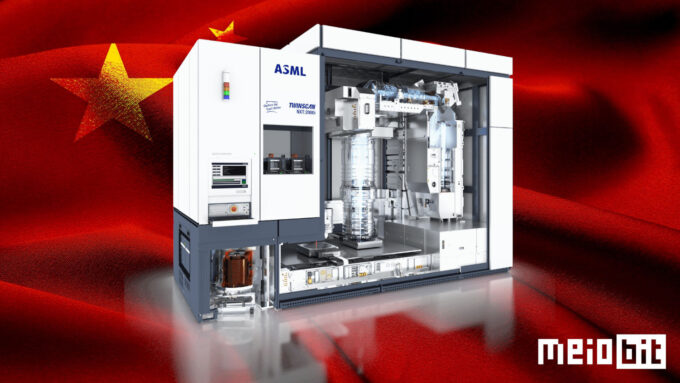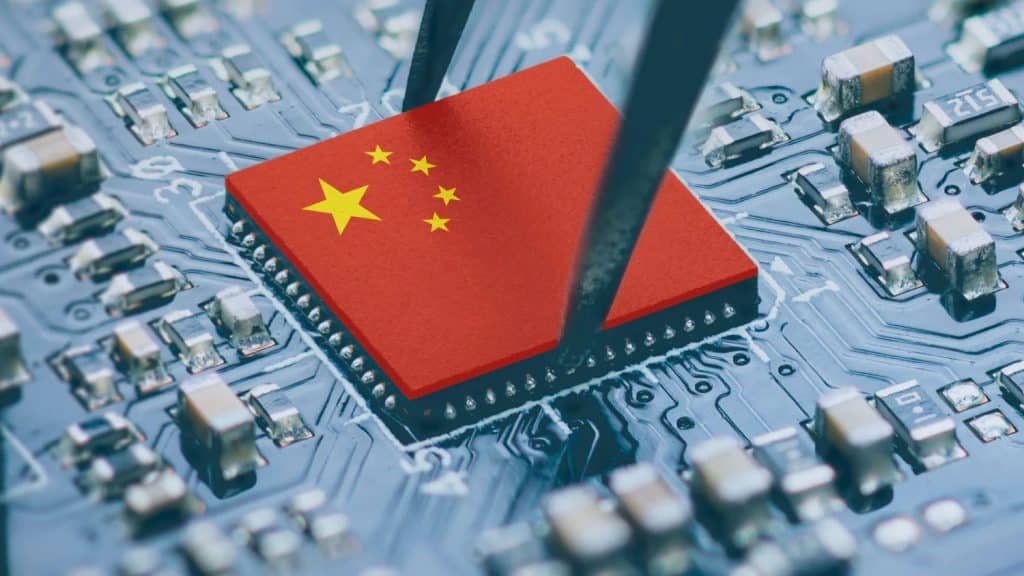A China faces a series of economic sanctions from the United States, being prevented from purchasing high-tech components for the development of semiconductors, officially motivated by what it called “industrial espionage” carried out by companies such as Huawei and ZTE, both of which have strong ties with the government of Beijing. The movement is understood by market experts as an attempt to slow Chinese technological advancement, which threatens American dominance in the chip sector, but according to a former executive at TSMC, a Taiwanese company that prints chips for Apple and several other companies, Such a strategy is “doomed to failure”: the Middle Country will continue to evolve at a rapid pace, whether Washington wants it or not.
 According to an expert, China has the means to develop powerful chips, and the US cannot do anything to stop it (Credit: reproduction/internet collection) The statement came from Burn-Jeng Lin, engineer and now a member of the faculty at National Tsing University Hua in Taiwan, during an interview with Bloomberg. He is considered a guru in lithography, having been the first to suggest the immersion technique in the 1980s, using a very thin layer of water as a lens, allowing chip printers to improve the process. Lin worked for several years at TSMC, where he rose to the position of vice president, and his opinions, although very rare, are always seen as very well-founded insights into the semiconductor sector. This time, he presented a very rich overview of China's current stage of development in components such as SoCs, which the US is trying to slow down, whether for preventing competition or for reasons of national security, the official excuse. The former TSMC executive explains that the acts and sanctions against Chinese companies, especially ZTE, Huawei and the semiconductor company SMIC, which is responsible for printing the powerful Kirin 9000s chip, which for the Biden administration “should not exist”, are causing the opposite effect to that expected. Rather than hindering evolution, Chinese engineers are going out of their way to circumvent commercial limitations, and coming up with solutions that were first deprecated by design, but no longer. One of the main factors is the gradual tightening of sanctions against China. Huawei, for example, was initially able to purchase certain components from US partners like SK Hynix, which use American technologies, until the White House later decided that business between them was no longer permitted. The most recent case involves the designs of certain products created specifically for the Chinese market, by companies such as Nvidia, AMD and Intel, in compliance with previous sanctions; the new round prevents even these from being sold to China, which had a negative impact on the market value of all of them. Another company that cannot do business with China, and considered critical, is the Dutch ASML, manufacturer of advanced lithography machines and equipment responsible for the most powerful processors on the market, whether x86-64 or ARM. Lin points out that the most recent sanctions prevent China from acquiring the latest models of deep ultraviolet scanners, which enable printing in processes up to 5 nanometers, but there are two factors that complicate Americans' lives.
According to an expert, China has the means to develop powerful chips, and the US cannot do anything to stop it (Credit: reproduction/internet collection) The statement came from Burn-Jeng Lin, engineer and now a member of the faculty at National Tsing University Hua in Taiwan, during an interview with Bloomberg. He is considered a guru in lithography, having been the first to suggest the immersion technique in the 1980s, using a very thin layer of water as a lens, allowing chip printers to improve the process. Lin worked for several years at TSMC, where he rose to the position of vice president, and his opinions, although very rare, are always seen as very well-founded insights into the semiconductor sector. This time, he presented a very rich overview of China's current stage of development in components such as SoCs, which the US is trying to slow down, whether for preventing competition or for reasons of national security, the official excuse. The former TSMC executive explains that the acts and sanctions against Chinese companies, especially ZTE, Huawei and the semiconductor company SMIC, which is responsible for printing the powerful Kirin 9000s chip, which for the Biden administration “should not exist”, are causing the opposite effect to that expected. Rather than hindering evolution, Chinese engineers are going out of their way to circumvent commercial limitations, and coming up with solutions that were first deprecated by design, but no longer. One of the main factors is the gradual tightening of sanctions against China. Huawei, for example, was initially able to purchase certain components from US partners like SK Hynix, which use American technologies, until the White House later decided that business between them was no longer permitted. The most recent case involves the designs of certain products created specifically for the Chinese market, by companies such as Nvidia, AMD and Intel, in compliance with previous sanctions; the new round prevents even these from being sold to China, which had a negative impact on the market value of all of them. Another company that cannot do business with China, and considered critical, is the Dutch ASML, manufacturer of advanced lithography machines and equipment responsible for the most powerful processors on the market, whether x86-64 or ARM. Lin points out that the most recent sanctions prevent China from acquiring the latest models of deep ultraviolet scanners, which enable printing in processes up to 5 nanometers, but there are two factors that complicate Americans' lives.
 Chinese engineers would have modified the Twinscan NXT:2000i, ASML's deep ultraviolet scanner, to enable more advanced lithography processes (Credit: ASML/Ronaldo Gogoni/Meio Bit) The first of these is the time window until the sanctions come into force, on January 1, 2024. Requests made before the publication of the sanctions can be honored normally until the end of 2023, without ASML being reprimanded for this. SMIC, of course, is one of the Dutch's main clients. The second factor involves the expertise of Chinese engineers, who managed to modify machinery such as the Twinscan NXT:2000i, improving its capabilities and enabling it to operate in lithography processes below what would be allowed by American sanctions. The Kirin 9000s, for example, is a 14 nm chip that uses advanced production techniques, which according to experts, allows it to achieve the performance of a native 7 nm chip. With the modifications made to the ASML machinery it already has, and still being able to acquire new machines before the sanctions take effect, Lin categorically states that Chinese chip manufacturing will be able to print new 5nm chips at scale, and there is nothing what the US can do to stop this. According to Lin, the sanctions forced China to adopt a unified national strategy to foster the evolution of its own processes, by any means necessary, a practical application of the old adage “necessity is the mother of invention.” Both state-owned chip manufacturers, SMIC and YMTC, are on their way to becoming giants in the semiconductor sector, competing against other companies that print chips, such as TSMC and Samsung. In the medium term, China would have the means to reverse engineer the ASML machinery, leading to the creation of its own equipment that operates at even lower lithographs, reaching 3 nm or even 2 nm in the not-so-distant future, which could mean new chips to be consumed internally, but could also be supplied to BRICS countries, such as Brazil, India and South Africa, and also Russia (which currently has China as its main technology supplier) and future additions to the bloc, which include Iran, United Arab Emirates, Ethiopia, Egypt, Argentina and Saudi Arabia. For Lin, what the United States should do, instead of trying to slow down Chinese technological advancement, and failing miserably in the process, would be to invest in its own designs and depend less on external factors, but companies like Intel, Apple and co. They don't even want to hear about printing chips at home, as it is a much more expensive process, and options such as migrating production to other countries, such as India, are not that advantageous. Today, American regulators question whether the sanctions imposed on China failed in their original purpose, when, in fact, they had the opposite effect, by leveraging the evolution of internal processes, which over time will further intensify competition between both countries in the chip sector. Source: Bloomberg
Chinese engineers would have modified the Twinscan NXT:2000i, ASML's deep ultraviolet scanner, to enable more advanced lithography processes (Credit: ASML/Ronaldo Gogoni/Meio Bit) The first of these is the time window until the sanctions come into force, on January 1, 2024. Requests made before the publication of the sanctions can be honored normally until the end of 2023, without ASML being reprimanded for this. SMIC, of course, is one of the Dutch's main clients. The second factor involves the expertise of Chinese engineers, who managed to modify machinery such as the Twinscan NXT:2000i, improving its capabilities and enabling it to operate in lithography processes below what would be allowed by American sanctions. The Kirin 9000s, for example, is a 14 nm chip that uses advanced production techniques, which according to experts, allows it to achieve the performance of a native 7 nm chip. With the modifications made to the ASML machinery it already has, and still being able to acquire new machines before the sanctions take effect, Lin categorically states that Chinese chip manufacturing will be able to print new 5nm chips at scale, and there is nothing what the US can do to stop this. According to Lin, the sanctions forced China to adopt a unified national strategy to foster the evolution of its own processes, by any means necessary, a practical application of the old adage “necessity is the mother of invention.” Both state-owned chip manufacturers, SMIC and YMTC, are on their way to becoming giants in the semiconductor sector, competing against other companies that print chips, such as TSMC and Samsung. In the medium term, China would have the means to reverse engineer the ASML machinery, leading to the creation of its own equipment that operates at even lower lithographs, reaching 3 nm or even 2 nm in the not-so-distant future, which could mean new chips to be consumed internally, but could also be supplied to BRICS countries, such as Brazil, India and South Africa, and also Russia (which currently has China as its main technology supplier) and future additions to the bloc, which include Iran, United Arab Emirates, Ethiopia, Egypt, Argentina and Saudi Arabia. For Lin, what the United States should do, instead of trying to slow down Chinese technological advancement, and failing miserably in the process, would be to invest in its own designs and depend less on external factors, but companies like Intel, Apple and co. They don't even want to hear about printing chips at home, as it is a much more expensive process, and options such as migrating production to other countries, such as India, are not that advantageous. Today, American regulators question whether the sanctions imposed on China failed in their original purpose, when, in fact, they had the opposite effect, by leveraging the evolution of internal processes, which over time will further intensify competition between both countries in the chip sector. Source: Bloomberg
